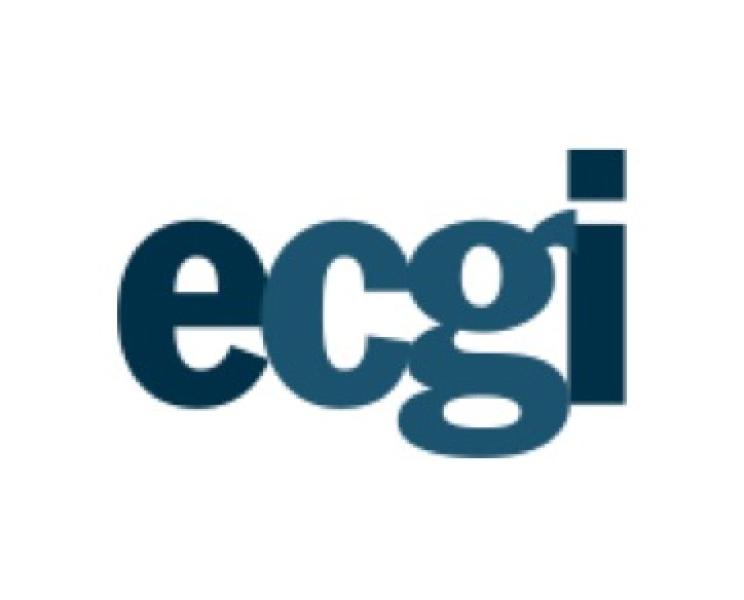
4th Annual Boca-ECGI Corporate Finance and Governance Conference
ABOUT THE EVENT
Florida Atlantic University, along with ECGI, organised its 4th Annual Boca-ECGI Corporate Finance and Governance Conference. The conference was hybrid, held at Florida Atlantic University in Boca Raton, Florida, and virtually on 9th and 10th December 2023.
The conference had three tracks (A), (B), and (C) over Saturday December 9, 2023 to Sunday December 10, 2023. The conference offered an interdisciplinary forum to gain feedback on timely working papers from scholars in finance, entrepreneurship, innovation, international business, law, management and accounting disciplines.
Keynote Speaker: Thorsten Beck, European University Institute, and Co-Editor of the Journal of Banking and Finance
Conference Location: College of Business, Florida Atlantic University (FAU), Boca Raton, Florida
Please email at this address for any queries cummingd@fau.edu or sjohan@fau.edu.
Awards:
Review of Corporate Finance Award Announcement: The $1000 Award for the best paper published in the Review of Corporate Finance (Volume 3 Issues 1-4, 2023) was announced at the conference.
Conference Awards: $1000. There was 2 best paper ($300 each) and 2 best discussant ($200 each) awards, consistent with the 3 prior Boca Conferences. Plaques were provided by the British Academy of Management Corporate Governance Special Interest Group.
More information: https://sites.google.com/view/review-of-corporate-finance/2023-boca-conference-call-for-papers?authuser=0
Programme
Welcome Remarks
Speaker(s)
Track A | Session 1A | FinTech I
Moderator
Coffee break
Track A | Session 2A | FinTech II
Moderator
HACKED: Understanding the Stock Market Response to Cyberattacks
Speaker(s)
Discussant
M&A and Cybersecurity Risk: Empirical Evidence
Speaker(s)
Discussant
A Growth and Innovation Model of the Modern Data Economy
Speaker(s)
Discussant
Lunch
Track A | Session 3A | Innovation
Moderator
ChatGPT and Corporate Policies
Speaker(s)
Discussant
Coffee break
Track A | Session 4A | Cryptos and NFTs
Moderator
The long-run performance of Initial Coin Offerings
Speaker(s)
Discussant
Cross-Sectional Return Predictors of Utility Tokens
Speaker(s)
Discussant
Market Manipulation in NFT Markets
Speaker(s)
Discussant
Coffee break
Track A | Session 5A | VC & PE I
Moderator
Strategic Regulatory Non-Disclosure: The Case of the Missing Form D
Speaker(s)
Discussant
Public Listing Choice with Persistent Hidden Information
Speaker(s)
Discussant
Track B | Session 1B | Loans I
Social Capital and Mortgages
Speaker(s)
Discussant
Monitoring with Small Stakes
Speaker(s)
Discussant
Coffee break
Track B | Session 2B | Loans II
Moderator
Fraud Litigation and FHA Mortgage Lending
Speaker(s)
Discussant
Bank Technology Adoption and Loan Production in the U.S Mortgage Market
Speaker(s)
Discussant
Bank Branch Access: Evidence from Geolocation Data
Speaker(s)
Discussant
Lunch
Track B | Session 3B | Executive Compensation
Moderator
Debt Dynamics in Executive Compensation
Speaker(s)
Discussant
Disclosure of Pay Versus Performance
Speaker(s)
Discussant
Coffee break
Track B | Session 4B | CEOs
Moderator
CEOs’ Narcissism and Opportunistic Insider Trading
Speaker(s)
Discussant
Coffee break
Track B | Session 5B | CSR, ESG
Moderator
Corporate Social Responsibility and Hedging Policies
Speaker(s)
Discussant
What Does ESG Investing Mean and Does It Matter Yet?
Speaker(s)
Discussant
Track C | Session 1C | Misconduct I
Moderator
Corruption and Cash Policy: Evidence from a Natural Experiment
Speaker(s)
Discussant
Coffee break
Track C | Session 2C | Misconduct II
Moderator
Once Bitten, Twice Shy: Evidence from Venture Capital and Scam Startups
Speaker(s)
Discussant
Lunch
Track C | Session 3C | Regulation
Moderator
When There’s A Cap on SEC Pay, Firms Will Play With Their ROA
Speaker(s)
Discussant
Endogenous Policy Uncertainty
Speaker(s)
Discussant
Coffee break
Track C | Session 4C | Regulation
Moderator
Financing Intangibles
Speaker(s)
Discussant
Preparing for the Storm: Firm Policies and Time-varying Recession Risk
Speaker(s)
Discussant
Coffee break
The Rise of Anti-Activist Poison Pills
Speaker(s)
Discussant
Identifying the Real Effects of the M&A Market on Target Firms
Speaker(s)
Discussant
Track A | Session 6A | Mixing Forms of Entrepreneurial Finance
Moderator
Divide and Conquer: Investor Type Diversity in Entrepreneurial Ventures
Speaker(s)
Discussant
Coffee break
Track A | Session 7A | VC & PE II
Moderator
Private Equity and Gas Emissions: Evidence from Electric Power Plants
Speaker(s)
Discussant
Gunned Down By Private Equity?
Speaker(s)
Discussant
Lunch
Keynote:
Speaker(s)
Coffee break
Track A | Session 8A | Ownership and Control
Moderator
Control Motivations and Firm Growth
Speaker(s)
Discussant
Control Without Ownership: Governance of Nonprofit Hospitals
Speaker(s)
Discussant
How Effective are Non-Banks During a Crisis
Speaker(s)
Discussant
Coffee break
Track A | Session 9A | Culture, Openness, Ideology
Moderator
Fiduciary Duty of Loyalty and Corporate Culture
Speaker(s)
Discussant
The Value of Openness
Speaker(s)
Discussant
Individual Investor Ideology
Speaker(s)
Discussant
Awards Announcements and Meet the Editors
Track B | Session 6B | Environmental
Moderator
Voice Through Divestment
Speaker(s)
Discussant
The Impact of Corporate Environmental Misconduct on Bond Issues and Seasoned Equity Offerings
Speaker(s)
Discussant
Coffee break
Track B | Session 7B | Green Bonds
Moderator
Investors in Green Bonds
Speaker(s)
Discussant
The Emerging Greenium
Speaker(s)
Discussant
Lunch
Keynote:
Speaker(s)
Coffee break
Track B | Session 8B | Gender and Diversity
Moderator
Female Equity Analysts and Corporate Environmental and Social Performance
Speaker(s)
Discussant
Corporate board gender diversity and asset liquidity
Speaker(s)
Discussant
What is the Value of Workforce Diversity?
Speaker(s)
Discussant
Coffee break
Track B | Session 9B | Diversity, ESG
Moderator
Awards Announcements and Meet the Editors
Track C | Session 6C | M&As II
Moderator
Assortative Matching in Mergers: Evidence from Skill Demand
Speaker(s)
Discussant
Corporate Social Responsibility and Post-merger Labour Restructuring
Speaker(s)
Discussant
Coffee break
Track C | Session 7C | Directors
Moderator
Why do Investors Vote Against Corporate Directors?
Speaker(s)
Discussant
Searching For Directors
Speaker(s)
Discussant
Lunch
Keynote:
Speaker(s)
Coffee break
Track C | Session 8C | Fund Management and Investment Consequences
Moderator
Government Contracts and Labor Investment Efficiency
Speaker(s)
Discussant
Mutual Fund Disagreement and Firm Value: Passive vs. Active Voice
Speaker(s)
Discussant
Coffee break
Track C | Session 9C | Voting, Coasean
Moderator
Every Vote Counts: Mandatory Disclosure and Voting Outcomes
Speaker(s)
Discussant
Shareholder Voice and Executive Compensation
Speaker(s)
Discussant
Some Fallacies in Corporate Finance: A Coasean Perspective
Speaker(s)
Discussant
Awards Announcements and Meet the Editors
Speakers

Enshuai Yu

Svetlana Kalinnikova

Shiva Shankar Narayana Raju Indukoori

Anastassia Vilderson
Anete Pajuste
Douglas Cumming
Presentations
Contact






































































































































































































































































































